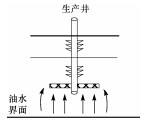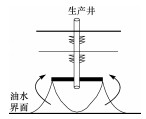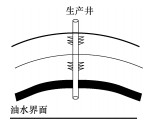

Oil & Gas Geology ›› 2021, Vol. 42 ›› Issue (2): 522-532.doi: 10.11743/ogg20210220
• Petroleum Geology • Previous Articles Next Articles
Yi Tu( ), Zhenghe Yan*(
), Zhenghe Yan*( ), Jianwen Dai, Yahui Wang, YiDong Zhu, Yong Yang, Jiao Yang, Weifeng Wang
), Jianwen Dai, Yahui Wang, YiDong Zhu, Yong Yang, Jiao Yang, Weifeng Wang
Received:2020-08-04
Online:2021-04-28
Published:2021-04-21
Contact:
Zhenghe Yan
E-mail:tuyi200605156@126.com;yanzhh@cnooc.com.cn
CLC Number:
Yi Tu, Zhenghe Yan, Jianwen Dai, Yahui Wang, YiDong Zhu, Yong Yang, Jiao Yang, Weifeng Wang. New understanding and tapping effect of remaining oil reservoirs in Xijiang oilfield, PRBM, South China Sea[J]. Oil & Gas Geology, 2021, 42(2): 522-532.
Add to citation manager EndNote|Reference Manager|ProCite|BibTeX|RefWorks
Table 1
Production statistics of mature wells in the Xijiang oilfield, PRMB"
| 井号 | 投产日期 | 关井日期 | 生产层位 | 距第一口新井B-1投产(2014/10/29) | |
| 位置 | 运聚时间/a | ||||
| Y-14 | 1997年6月 | 2004年1月 | T5-2/T6-1/T6-2/T8/T9/T11/T12/T13 | 高部位 | 10 |
| Y-17 | 1999年6月 | 2005年10月 | T8/T9/T11/T12/T13 | 边部位 | 9 |
| Y-18 | 2000年6月 | 2003年7月 | T5-2/T6-1/T6-2/T8/T9/T11/T12/T13 | 中部位 | 11 |
| Y-20 | 2001年5月 | 2004年7月 | T5-2/T6-1/T6-2/T8/T9/T11/T12 | 高部位 | 10 |
| Y-22 | 2002年6月 | 2004年12月 | T5-2/T6-1/T6-2/T8/T9/T11/T12 | 高部位 | 10 |
| Y-23 | 2003年3月 | 2009年6月 | T5-2/T6-1/T6-2/T8/T9/T11/T12/T13 | 高部位 | 5 |
| Y-18-1 | 2003年9月 | 2009年1月 | 其他层位 | 中部位 | 5 |
| Y-24 | 2004年2月 | 2006年3月 | T6-1/T6-2/T8/T9/T12 | 边部位 | 8 |
| Y-14-1 | 2004年6月 | 2007年2月 | T6-1/T6-2/T8/T9/T12/T13 | 中部位 | 7 |
| Y-20-1 | 2004年8月 | 2008年3月 | T5-2/T6-1T6-2/T8/T9/T12 | 高部位 | 6 |
| Y-1-1 | 2005年2月 | 2008年9月 | T6-1/T6-2/T8/T9/T11/T12 | 中部位 | 6 |
| Y-22-1 | 2005年9月 | 2007年5月 | T5-2/T6-1/T6-2/T8/T9/T11/T12 | 中部位 | 7 |
| Y-17-1 | 2006年1月 | 2009年3月 | T12 | 高部位 | 5 |
| Y-24-1 | 2006年6月 | 2007年5月 | T6-1/T6-2/T8/T9/T12 | 中部位 | 7 |
| Y-14-2 | 2007年6月 | 2013年7月 | T6-1/T6-2/T8/T9/T12 | 中部位 | 1 |
| Y-22-2 | 2008年2月 | 2015年11月 | T6-1/T6-2/T8/T12 | 西北边部位 | 0 |
| Y-24-2 | 2008年10月 | 2011年3月 | T6-1/T6-2/T8/T9/T12 | 高部位 | 3 |
Table 2
Different orders of configuration interfaces for channels or mouth bar complexes in the Xijiang oilfield, PRMB"
| 界面级次 | 5级界面 | 4级界面 | 3级界面 |
| 构型要素 | 水下分流河道复合体 河口坝复合体 | 单一分流河道 单一河口坝 | 分流河道 增生体 |
| 沉积剖面 |  |  |  |
| 发育特征 | 岩性以泥岩为主,渗透性差,延伸范围广,以隔层遮挡流体纵向和横向流动 | 以泥岩或粉砂质泥岩为主,物性差,渗透率较差,对砂体内流体具有垂向遮挡作用 | 以泥质粉砂岩、钙质砂岩为主,厚度较薄且延伸范围有限,局部遮挡作用或延缓流体的流动 |
Table 3
Interbed distribution in the Xijiang oilfield, PRMB"
| 模式 | 模式1 | 模式2 | 模式3 | 模式4 |
| 模式图 |  |  |  |  |
| 夹层类型 | 无夹层 | 小范围 半渗透型夹层 | 大范围 半渗透型夹层 | 大范围 不渗透型夹层 |
| 分布范围 | 无夹层 | 1~3个井区 | 3~4个井区 | 5个井区以上 |
| 厚度/m | <0.5 | 1.0~2.0(主要集中在1.0 m左右) | 2.0~4.0 | >4.0 |
| 渗透率/(10-3 μm2) | >10.0 | 1.0~10.0 | <0.1 | <0.1 |
| 泥质含量/% | <10 | 10~30 | >30 | >50 |
| 驱替特征 | 底水驱 | 次生底水驱 次生边水驱 | 次生边水驱 | 衰竭式 |
| 油井特征 | 高产短命 | 高产高效长命 | 高产高效 | 低产短命 |
| 典型油井 | Y1-8H,Y1-5H1 | Y1-4H,Y1-10H | Y1-6H,Y1-9H | Y1-02,Y1-13HA,Y1-3H高部位 |
| 层位 | T11,T13 | T4B,T1B1 | T9,T3G | T6B,T12,T9,T11 |
| 1 | 李志鹏, 林承焰, 李润泽, 等. 利用油气势能预测油藏开发后期剩余油富集区[J]. 特种油气藏, 2012, 19 (2): 69- 72. |
| Li Thipeng , Lin Chengyan , Li Runze , et al. Predict residual oil zones in the late life of oilfield development by hydrocarbon potential[J]. Special Oil and Gas Reservoirs, 2012, 19 (2): 69- 72. | |
| 2 | 蒲玉国, 吴时国, 冯延状, 等. 剩余油"势控论"的初步构建及再生潜力区模式[J]. 西安石油大学学报(自然科学版), 2005, 20 (6): 7- 11. |
| Pu Yuguo , Wu Shiguo , Feng YanThuang , et al. Preliminary establishment of "the theory of potential controlling remaining oil" and modes of remaining oil regenerating potential area[J]. Journal of Xi'an Shiyou University(Natural Science Edition), 2005, 20 (6): 7- 11. | |
| 3 | 陈飞, 胡光义, 胡宇霆, 等. 储层构型研究发展历程与趋势思考[J]. 西南石油大学学报(自然科学版), 2018, 40 (5): 1- 14. |
| Chen Fei , Hu Guangyi , Hu Yuting , et al. Development history and future trends in reservoir architecture research[J]. Journal of Southwest Petroleum University (Science & Technology Edition), 2018, 40 (5): 1- 14. | |
| 4 | 胡光义, 范廷恩, 陈飞, 等. 复合砂体构型理论及其生产应用[J]. 石油与天然气地质, 2018, 39 (1): 1- 10. |
| Hu Guangyi , Fan Ting'en , Chen Fei , et al. Theory of composite sand body architecture and its application to oilfield development[J]. Oil & Gas Geology, 2018, 39 (1): 1- 10. | |
| 5 | 张瑞, 刘宗宾, 贾晓飞, 等. 基于储层构型研究的储层平面非均质性表征[J]. 西南石油大学学报(自然科学版), 2018, 40 (5): 15- 27. |
| Zhang Rui , Liu Tongbin , Jia Xiaofei , et al. Reservoir plane heterogeneity characterization based on reservoir architecture research[J]. Journal of Southwest Petroleum University (Science & Technology Edition), 2018, 40 (5): 15- 27. | |
| 6 | 吴冲龙, 林忠民, 毛小平, 等. "油气成藏模式"的概念、研究现状和发展趋势[J]. 石油与天然气地质, 2009, 12 (6): 673- 682. |
| Wu Chonglong , Lin Thongmin , Mao Xiaoping , et al. Concept research status and trend of "Hydrocarbon Pooling Patterns"[J]. Oil & Gas Geology, 2009, 12 (6): 673- 682. | |
| 7 | 韩大匡. 准确预测剩余油相对富集区提高油田注水采收率研究[J]. 石油学报, 2007, 28 (2): 73- 78. |
| Han Dakuang . Precisely predicting abundant remaining oil and improving the secondary recovery of mature oilfields[J]. Acta Petrolei Sinica, 2007, 28 (2): 73- 78. | |
| 8 | 党胜国, 权勃, 闫建丽, 等. 小气顶低幅构造强底水油藏剩余油分布主控因素[J]. 油气地质与采收率, 2016, 23 (1): 129- 132. |
| Dang Shengguo , Quan Bo , Yan Jianli , et al. Main control factors of remaining oil in the oil reservoirs with small gas cap, low amplitude structure and strong bottom water[J]. Petroleum Geology and Recovery Efficiency, 2016, 23 (1): 129- 132. | |
| 9 | 韩雪芳, 颜冠山, 刘宗宾, 等. 基于单成因砂体的三角洲前缘油水运动规律——以渤海湾盆地Z油田东营组二段下亚段为例[J]. 石油与天然气地质, 2017, 38 (2): 241- 247. |
| Han Xuefang , Yan Guanshan , Liu Tongbin , et al. Oil-water movement pattern based on research of delta front monogenetic sand: A case study from the E3d2L of Oilfield Z in the Bohai Bay Basin[J]. Oil & Gas Geology, 2017, 38 (2): 241- 247. | |
| 10 | 王浩然, 付广, 宿碧霖, 等. 下生上储式油气运移优势路径确定方法及其应用[J]. 石油与天然气地质, 2018, 39 (6): 1237- 1245. |
| Wang Haoran , Fu Guang , Su Bilin , et al. A method to determine preferential pathways for hydrocarbon migration in "lower source rock and upper reservoir" combination and its application[J]. Oil & Gas Geology, 2018, 39 (6): 1237- 1245. | |
| 11 | Jiao Y , Yan J , Sitian L , et al. Architectural units and heterogeneity of channel reservoirs in the Karamay Formation, outcrop area of Karamay oil field, Junggar Basin, northwest China[J]. AAPG Bulletin, 2005, 89 (4): 529- 545. |
| 12 | 张建宁, 尤启东, 郭文敏. 高含水停采油藏剩余油再聚集敏感因素研究[J]. 油气藏评价与开发, 2015, 5 (3): 39- 43. |
| Zhang Jianning , You Qidong , Guo Wenmin . Study on the sensitive factors of the residual oil reaccumulation of high water cut non-mining reservoir[J]. Reservoir Evaluation and Development, 2015, 5 (3): 39- 43. | |
| 13 | 曾祥平. 储集层构型研究在油田精细开发中的应用[J]. 石油勘探与开发, 2010, 37 (4): 483- 489. |
| Zeng Xiangping . App1ication of reservoir structure research in the fine exploitation of oilfields[J]. Petroleum Exploration and Development, 2010, 37 (4): 483- 489. | |
| 14 | 涂乙, 王亚会, 闫正和, 等. 基于构型单元"势控论"研究与剩余油开发效果分析[J]. 岩性油气藏, 2019, 31 (4): 133- 140. |
| Tu Yi , Wang Yahui , Yan Thenghe , et al. Potential control theory based on configuration unit and remaining oil development effect[J]. Lithologic Reservoirs, 2019, 31 (4): 133- 140. | |
| 15 | 吴胜和. 储层表征与建模[M]. 北京: 石油工业出版社, 2010: 228- 234. |
| Wu Shenghe . Reservoir characteristization & modeling[M]. BeiJing: Petroleum Industry Press, 2010: 228- 234. | |
| 16 | 孙焕泉. 油藏动态模型和剩余油分布模式[M]. 北京: 石油工业出版社, 2002: 59- 61. |
| Sun Huanquan . Reservoir dynamic model and residual oil distribution pattern[M]. Beijing: Petroleum industry press, 2002: 59- 61. | |
| 17 | 夏竹, 张婷婷, 张胜, 等. 水平井参与下的油藏隔夹层描述技术及应用[J]. 石油与天然气地质, 2018, 39 (6): 1293- 1304. |
| Xia Zhu , Zhang Tingting , Thang Sheng , et al. Technique for describing baffles and barriers in oil reservoir with horizontal well data integrated and its application[J]. Oil & Gas Geology, 2018, 39 (6): 1293- 1304. | |
| 18 | 李胜利, 于兴河, 高兴军, 等. 生产动态和油藏静态结合研究剩余油分布的理论与方法[J]. 资源与产业, 2006, 8 (2): 63- 66. |
| Li Shengli , Yu Xinghe , Gao Xingjun , et al. The theory and method of remaining oil distribution combining dynamic production data and static reservoir research[J]. Resources & Industries, 2006, 8 (2): 63- 66. | |
| 19 | 刘芳, 刘性全, 刘宗堡, 等. 基于储层构型理论的致密砂岩成藏过程分析——以松辽盆地古龙向斜葡萄花油层为例[J]. 石油与天然气地质, 2018, 39 (2): 268- 278. |
| Liu Fang , Liu Xingquan , Liu Zongbao , et al. Hydrocarbon accumulation analysis of tight sandstone based on reservoir architecture theory: A case from Putaohua reservoir in the Gulong syncline, Songliao Basin[J]. Oil & Gas Geology, 2018, 39 (2): 268- 278. | |
| 20 | 邓庆杰, 康德江, 胡明毅, 等. 松辽盆地三肇凹陷南部泉头组四段浅水三角洲河道储层构型特征[J]. 石油与天然气地质, 2020, 41 (3): 513- 524. |
| Deng Qingjie , Kang Dejiang , Hu Mingyi , et al. Architecture of channel reservoirs of shallow-water delta in the 4th member of Cretaceous Quantou Formation in southern Sanzhao Sag, Songliao Basin[J]. Oil & Gas Geology, 2020, 41 (3): 513- 524. | |
| 21 | 陈东阳, 王峰, 陈洪德, 等. 鄂尔多斯盆地东部府谷天生桥剖面上古生界下石盒子组8段辫状河储层构型表征[J]. 石油与天然气地质, 2019, 40 (2): 335- 345. |
| Chen Dongyang , Wang Feng , Chen Hongde , et al. Characterization of braided river reservoir architecture of the Upper Paleozoic He 8 member on Fugu Tianshengqiao Outcrop, eastern Ordos Basin[J]. Oil & Gas Geology, 2019, 40 (2): 335- 345. |
| Viewed | ||||||
|
Full text |
|
|||||
|
Abstract |
|
|||||